What's New
Displaying results 2031 - 2040 of 4052

Resource | Presentations,
By Supabhorn Pengnonyang
Program Coordinator
Thai Red Cross AIDS Research Centre
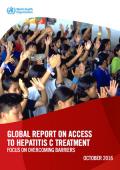
Resource | Publications,
This is the first-ever global report on treatment access to hepatitis C medicines. The report provides the information that countries and health authorities need to identify the appropriate HCV treatment, and procure it at affordable prices. The report uses the experience of several pioneering countries to demonstrate how barriers to treatment access can be overcome. It also provides information on the production of new hepatitis C drugs and generic versions worldwide, including where the drugs are registered, where the drugs are patented and where not, and what opportunities countries have under the license agreements that were signed by some companies as well as current pricing of all recommended DAAs, including by generic companies all over the world.
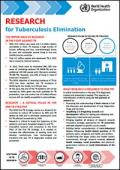
Resource | Fact Sheets,
The World Health Organization (WHO) has developed a Global Action Framework for TB Research, to foster high-quality national and global TB research over the next 10 years to 2025. The framework sets the principles for action on TB research and recommends the roles, responsibilities and deliverables for major stakeholders, both global and national. It is designed for use by a wide range of groups and individuals including ministries of health and their national TB programmes, ministries of science and technology, national research institutes, academia, researchers, international and national donors and technical agencies, NGOs and civil society.
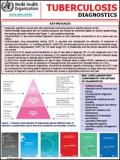
Resource | Fact Sheets,
• Diagnostic algorithms should start with appropriate screening policies to identify persons at risk.
• Recommended diagnostics are not mutually exclusive and should be combined based on country epidemiology, the existing laboratory network (see Figure 1), and available resources.
• Implementation of any recommended diagnostic requires all core laboratory components to be in place
• Culture-based, drug susceptibility testing (DST) is accurate and reproducible for detection of resistance to
isoniazid and rifampicin, i.e. multidrug-resistant (MDR-TB) and fluoroquinolones and second-line injectable drugs, i.e. extensively drug-resistant (XDR) TB. For other drugs DST is problematic and the clinical relevance of results are unclear.
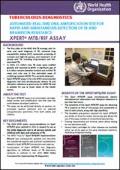
Resource | Fact Sheets,
The first pillar of the WHO End TB strategy calls for early and rapid diagnosis of TB, universal drug susceptibility testing (DST), systematic screening of contacts and high-risk groups, and treatment of all people with TB, including drug-resistant and HIV-associated TB. Xpert MTB/RIF assay is the only WHO-recommended diagnostic test that simultaneously detects TB and rifampicin resistance (a good proxy for MDR-TB) and is suitable for use at lower levels of the health system.
The Xpert MTB/RIF assay is an automated, cartridge-based nucleic acid amplification test that uses the multi-disease GeneXpert platform.
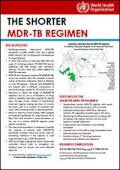
Resource | Fact Sheets,
- Multidrug-resistant tuberculosis (MDR-TB) represents a public health crisis and a global health security risk, carrying grave consequences for those affected.
- In 2015, there were an estimated 480 000 new cases of multidrug-resistant TB (MDR-TB) and an additional 100 000 people with rifampicin-resistant TB who were also newly eligible for MDR-TB treatment.
- MDR-TB and rifampicin resistant TB (MDR/RR-TB) cannot be treated with the standard 6-month course of first-line medication which is effective in most TB patients. Patients with MDR/RR-TB are treated with a different combination of second-line drugs, usually for 18 months or more.
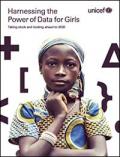
Resource | Publications,
Data tell us that the lives of girls today are better in many respects than those of preceding generations. Girls are now more likely to survive childhood, more likely to attend school and complete their education, less likely to be undernourished and less likely to marry as children. Yet girls still suffer significant deprivations and inequalities, many of which result from the persistent gender discrimination faced by girls and women everywhere. And for many girls, further disadvantage based on disability, location, race, ethnicity or migration status compounds the challenges of building a fulfilling future.
Achieving the SDGs will not be possible without reaching all girls, starting with the most disadvantaged.
Sustainable change for girls and progress towards achieving the SDGs will require investments from governments, donors and development organizations. This includes prioritizing infrastructure, goods and services that address girls’ vulnerabilities and remove barriers to their empowerment. But it will also require engagement from communities, social networks, families and girls themselves.

Resource | Publications,
This national report aims to provide a more detailed analysis of the results from HSS 2014-15. The profiles of the respondents and their correlations with the HIV prevalence, have been detailed in the report. This analysis has also covered the correlation between syphilis and HIV and, results of the same have been presented. Considering the diversity of the epidemic, HIV epidemic trends has been presented up to the district level to provide the indications of epidemic trajectory at the most local level. Besides, the report also presents the site wise data, continuing the tradition set in 2003.
Overall, the HIV epidemic is declining in the country but State wise variation has been observed. Declining trend has been observed in the erstwhile high prevalence states of Southern India. While long term trend is declining in the high prevalence States of the North- Eastern India, stabilization has been noticed in recent past in these States. Though the HIV prevalence is low, continuation of rising trends in many States of northern India is an area of concern. The analysis has also revealed a relatively higher prevalence (0.50% or above) among young pregnant women (15-24 years old) or among primi-gravida in many states. HIV prevalence in young pregnant women and primi-gravida in many states. HIV prevalence in young pregnant women and primi-gravida is considered as proxy for new infections, and hence States with higher prevalence in this subgroup need to note it duty and take urgent steps.
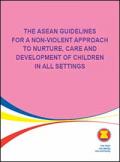
Resource | Guidelines,
The Regional Plan of Action (RPA) on Elimination of Violence against Children (EVAC) and the ASEAN Guidelines for a Non-violent Approach to Nurture, Care and Development of Children in All Settings (hence onwards shall be known as the ASEAN Guidelines, or Guidelines) are both pertaining to the elimination of violence against children. This Guidelines complements the ASEAN RPA on EVAC which serves as a blueprint or roadmap for AMS. The RPA is at the “macro” level, while the Guidelines is at the “micro” level i.e. the seven settings.
This ASEAN Guidelines is one of the priorities under the area of prevention of the ASEAN RPA on EVAC. One of the steps to prevent and eventually eliminate violence against children is to adopt a non-violent approach to nurture, care and development of children in all settings.
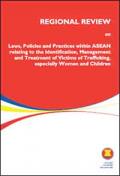
Resource | Reviews and Snapshots,
This Regional Review provides a description and assessment of laws, policies and practices within the ASEAN region related to trafficking in persons (TIP) – with a particular focus on the identification, management and treatment of victims of trafficking in persons, especially women and children.
The purpose of the Regional Review is to assist ASEAN and its Member States in their efforts to improve national and regional responses to assisting victims of trafficking.
More immediately, the Regional Review is intended to provide ASEAN Member States (AMS) with information and insight that will support implementation of the ASEAN Convention against Trafficking in Persons, especially Women and Children (ACTIP) and its Plan of Action (APA), both adopted in late 2015.





